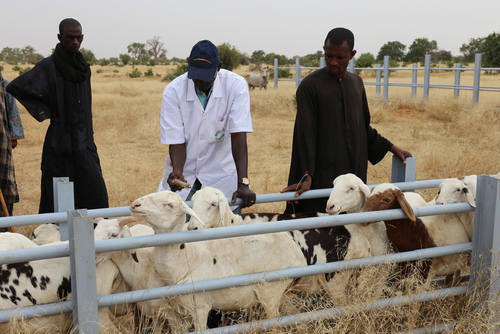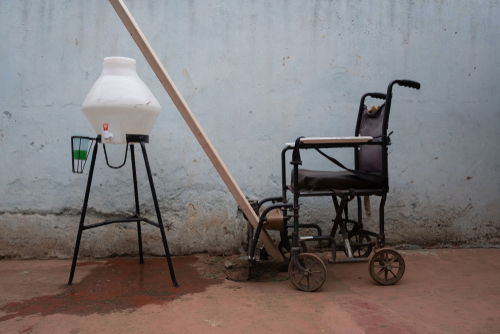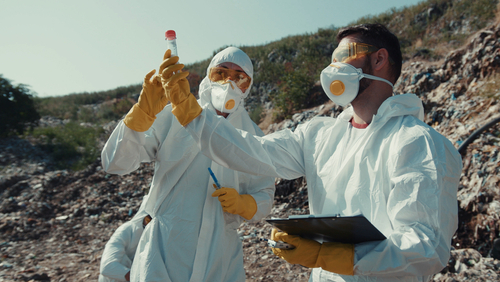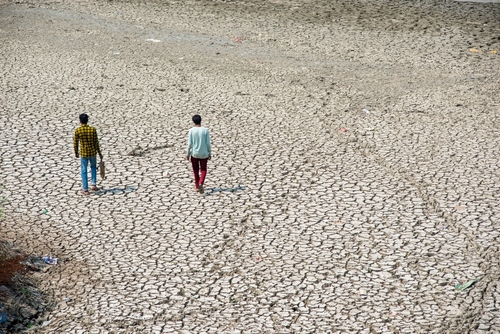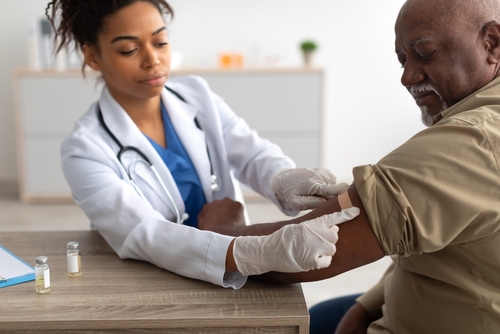March 06, 2024

Declining antimicrobial research and development workforce
The AMR Industry Alliance conducted a review of current antimicrobial resistance (AMR) research and development (R&D) and found a steep decline in the antimicrobial research workforce over the past 20 years, with only 3,000 active researchers worldwide (as of 2020). This “brain drain” is likely due to low investment in antimicrobial research, a lack of market incentives, and a loss of expertise due to job changes and retirement. Ensuring adequate public and private funding of incentives will drive AMR R&D efforts and curb the outflow of talented professionals from the field. [AMR Industry Alliance]
Expanding foodborne disease surveillance in northeastern India
The Indian Council of Medical Research (ICMR) established a network of medical and veterinary laboratories for the surveillance of foodborne diseases in northeast India known as the ICMR-FoodNet. Between 2020 and 2023, 13,981 samples were tested by the ICMR-FoodNet, just over 3 percent of which tested positive for enteric pathogens. The ICMR-FoodNet also identified the pathogens responsible for 8 out of 13 foodborne disease outbreaks across four northeastern states in the 3-year period. This study showed that the data which comes from ICMR-FoodNet is reliable. [BMC Public Health]
Creating an integrated environmental AMR surveillance database
Computational integration of AMR surveillance data across clinical, environmental, and veterinary sectors can address AMR from a systems-thinking, One Health standpoint. Currently, national and global action plans on AMR lack sufficient mention of the environment’s role in disseminating and transmitting AMR. Furthermore, existing environmental research has not elucidated the role of contaminants and residues – such as antibiotics, other antimicrobial compounds, and metals – versus that of antibiotic-resistant genes, in spreading AMR through wastewater. The development of a multi-domain database will help model and interpret complex and diverse AMR data and inform environmental advocacy and policy decisions. [The Lancet Planetary Health]
A call for prospective studies on environmental factors of respiratory disease transmission
A systematic review found that while a considerable amount of literature on SARS-CoV-2 transmission exists, publications on other respiratory infections such as respiratory syncytial virus and pneumonia are limited in number. Most studies investigating the association between environmental factors and respiratory viruses are ecological in nature, and few are prospective or experimental. More studies based on prospective data are needed to define the impact of environmental factors on respiratory virus transmission. [Frontiers in Environmental Health]
Cross-border travel is associated with higher malaria risk in French Guiana
A longitudinal study conducted in Saint Georges de l’Oyapock (SGO), French Guiana, which experienced malaria epidemics in 2017 and 2018, found that a higher estimated density of malaria vector Anopheles darlingi around a participant’s home was associated with a higher risk of Plasmodium spp. carriage. Travel to the high-risk regions on the Brazilian side of the French Guiana-Brazil border was also linked to a greater risk of Plasmodium spp. carriage, highlighting the role of cross-border mobility in malaria outbreaks in SGO in 2017 and 2018. [PLOS Global Public Health]
Improving WHO’s probable definition of dengue
A retrospective diagnostic study determined that the World Health Organization (WHO) 2009 probable definition of dengue yielded a sensitivity of 64 percent (95% confidence interval: 60-67%), a specificity of 57 percent (95% CI: 52-61%), a positive likelihood ratio of 1.49 (95% CI: 1.33-1.67), and a negative likelihood ratio of 0.63 (95% CI: 0.56-0.72). Adding lymphopenia to the probable definition of dengue would improve its sensitivity to 74 percent (95% CI: 71-78%) and negative likelihood ratio to 0.54 (95% CI: 0.46-0.63) at the slight expense of the specificity and positive likelihood ratio. In the absence of rapid diagnostics, using the improved WHO 2009 probable definition of dengue could help conserve resources and identify patients to undergo confirmatory testing. [PLOS One]
High rates of long-term disability after Chikungunya infection
A systematic review, meta-analysis, and modeling study found that the long-term average annual force of infection (FOI), or the rate at which susceptible people become infected, for chikungunya, is significantly higher in epidemic settings (0.009; 95% uncertainty interval: 0.005-0.014) than in endemic settings (0.001; 95% UI: 0.0008-0.0014). The study demonstrated that South Asia had the highest estimated median seroprevalence of chikungunya at age 10 (8.0%; 95% UI: 6.5-9.6%) while the lowest median seroprevalence was observed in the Middle East (1.0%; 95% UI: 0.5-1.9). Approximately 51 percent (95% confidence interval: 45-58%) of people with laboratory-confirmed, symptomatic chikungunya experienced chronic disability after infection. [The Lancet Infectious Diseases]
Vaccinating men against HPV is necessary to reduce the global HPV burden.
The fight against human papillomavirus (HPV) infection should not be limited to women. Men can carry and transmit the virus and can develop cancers caused in part by the virus. The highest prevalence of HPV in men occurs in sub-Saharan Africa, where incidence and mortality related to cervical cancer (caused by HPV infection) is highest. The HPV vaccine is highly effective at preventing infection, but female-only vaccination is insufficient to mitigate the global burden of HPV and its downstream effects. Lack of awareness, hesitancy, and fear of vaccine shortages for women are among the causes of low HPV vaccine uptake among men. [ImmunoTargets and Therapy]
Image from Shutterstock

